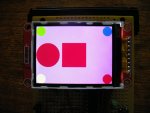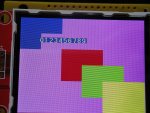I notice that LCD's these days communicate via I2C with CLK/DATA. I want just good old Serial.
The OLED, however nice, is just too expensive and therefore I opt for LCD display.
Where can I look for LCD's with SERIAL (not I2C) comms ?
If I use I2C, I will require the device address. What will a command to such an LCD look like, example please..........
Thanks in advance........
EDIT:
I require backlight, so afraid Rev-Ed LCD not suitable.......
The OLED, however nice, is just too expensive and therefore I opt for LCD display.
Where can I look for LCD's with SERIAL (not I2C) comms ?
If I use I2C, I will require the device address. What will a command to such an LCD look like, example please..........
Thanks in advance........
EDIT:
I require backlight, so afraid Rev-Ed LCD not suitable.......


